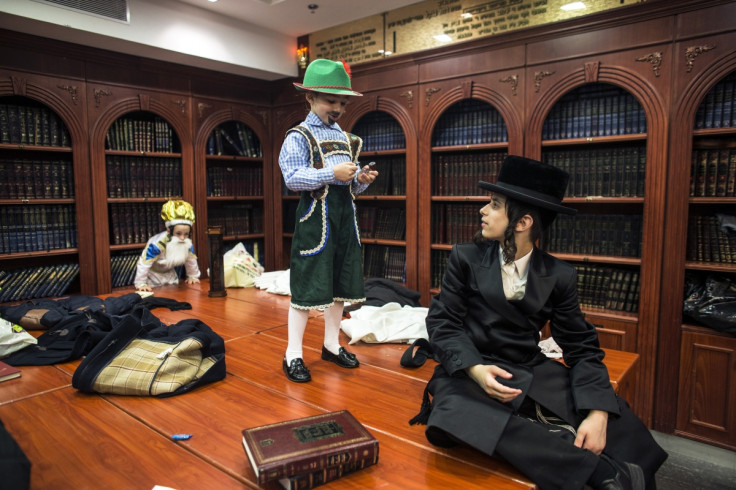What is Purim? Jews celebrate tale of thwarted genocide in ancient Persia

Across the world, Jews are marking the annual holiday of Purim on March 4 and 5 with dressing up in colourful costumes, big parties and special food. Some know it as a Jewish Mardis Gras because the festivities are carnivalesque. Jews are also encouraged to drink lots of wine.
It is both a celebration and remembrance of Jewish survival in the ancient world. The story of Purim is told in the Book of Esther, an old biblical text, and details a plot by the prime minister of Persia to carry out genocide on the Jews under his authority.
According to the Jewish Virtual Library:
The heroes of the story are Esther, a beautiful young Jewish woman living in Persia, and her cousin Mordecai, who raised her as if she were his daughter. Esther was taken to the house of Ahasuerus, King of Persia, to become part of his harem, and he loved her more than his other women and made her queen. But the king did not know that Esther was a Jew, because Mordecai told her not to reveal her nationality.
The villain of the story is Haman, an arrogant, egotistical advisor to the king. Haman hated Mordecai because Mordecai refused to bow down to Haman, so Haman plotted to destroy the Jewish people. In a speech that is all too familiar to Jews, Haman told the king, "There is a certain people scattered abroad and dispersed among the peoples in all the provinces of thy kingdom; and their laws are diverse from those of every people; neither keep they the king's laws; therefore it does not profit the king to suffer them." Esther 3:8. The king gave the fate of the Jewish people to Haman, to do as he pleased to them. Haman planned to exterminate all of the Jews.
Mordecai persuaded Esther to speak to the king on behalf of the Jewish people. This was a dangerous thing for Esther to do, because anyone who came into the king's presence without being summoned could be put to death, and she had not been summoned. Esther fasted for three days to prepare herself, then went into the king. He welcomed her. Later, she told him of Haman's plot against her people. The Jewish people were saved, and Haman was hanged on the gallows that had been prepared for Mordecai.
Purim is celebrated on the 14<sup>th and 15<sup>th of Adar, which is the twelfth month in the Jewish calendar and often falls in March. Jews commonly greet each other by saying "Chag Purim Sameach", which is Yiddish for Happy Purim. They also send eachother "mishloach manot" – baskets of food and drinks).

The Scroll of Esther is heard twice, known as the Purim Spiel, once on Purim eve and again on Purim day. The Al Hanissim prayer, which describes the Purim miracle, is recited during morning, afternoon and evening prayers. When Haman is mentioned, Jews are encouraged to boo, hiss and stamp their feet in disapproval.
Among the food prepared especially for Purim is hamantaschen, which means Haman's pockets, a type of sweet cookie filled with nut butter. A large challah, braided bread, is also cooked to remind Jews of the hangman's rope that awaited Haman.
According to My Jewish Learning:
Bean dishes are also eaten. They include salted beans boiled in their jackets, and chickpeas boiled and seasoned with salt and pepper: This is meant to remind us that Esther would not eat anything at the court of King Ahashuerus that was not kosher, so she mainly ate peas and beans.
Among Sephardic Jews, it is a custom to wrap pastry dough around a decorated hard-boiled egg to create the shape of a Purim character or an animal. After baking, these artistic creations (Folares) are displayed with pride and eaten with delight.
Jews are also encouraged to give to charity during Purim, particularly to those who are poor. And, out of normal Jewish custom, it is tradition to get so drunk you cannot tell the difference between Mordecai and Haman.
© Copyright IBTimes 2025. All rights reserved.






















